Order of the White Eagle, Type I, Civil Division, I Class Breast Star, with Diamonds (Special Grade)
SKU: 01.SRB.0101.103.01
Estimated market value:
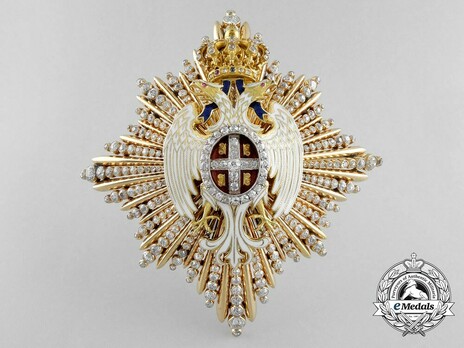
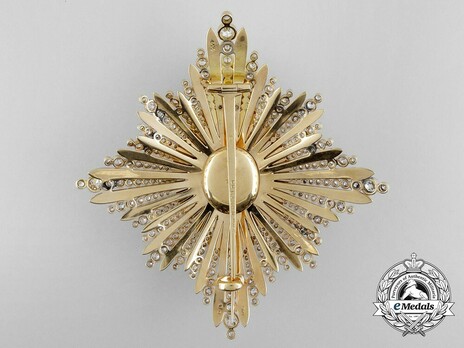
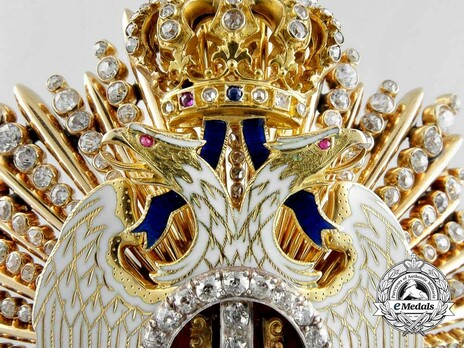
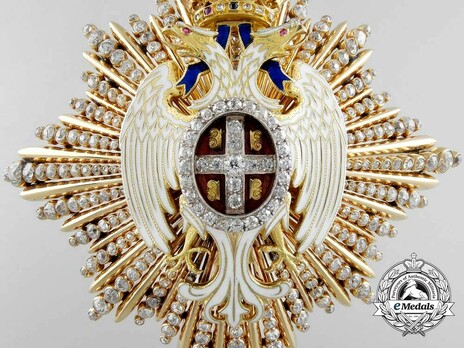
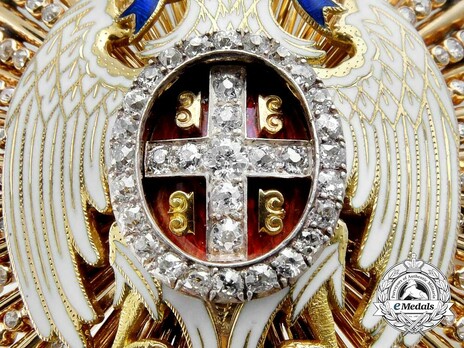
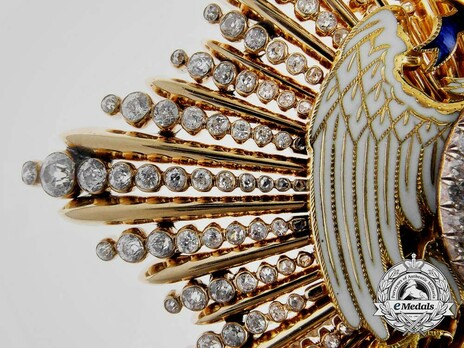
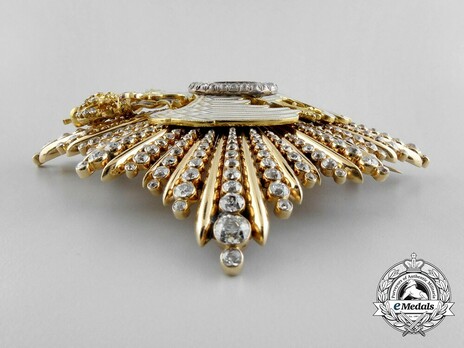
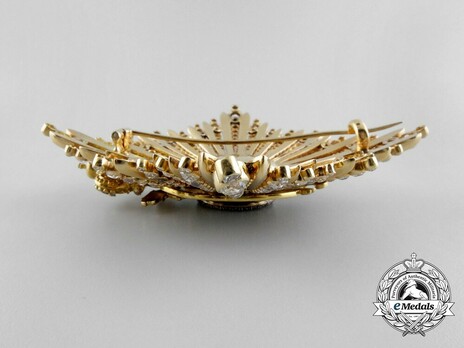
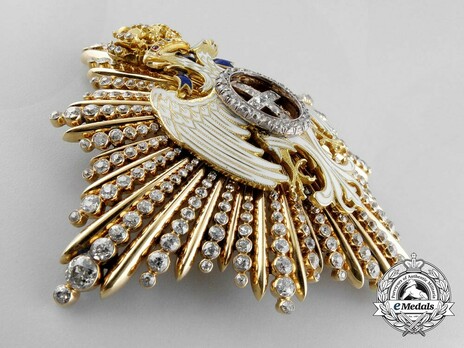
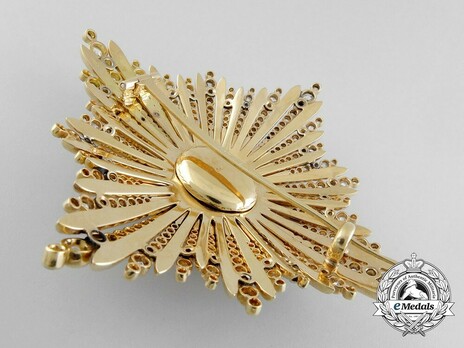
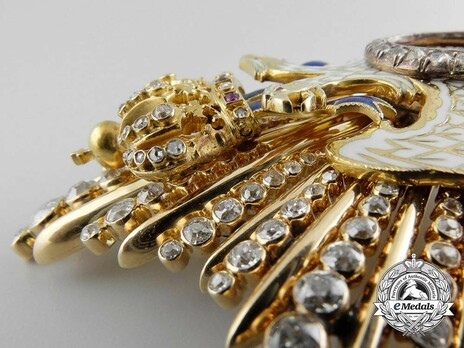
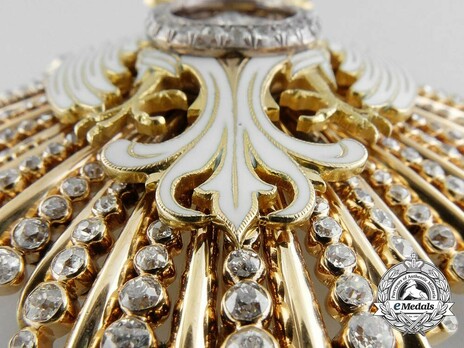
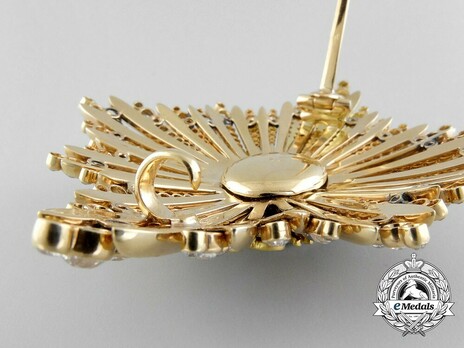
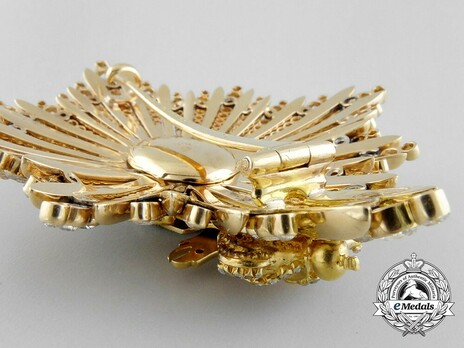
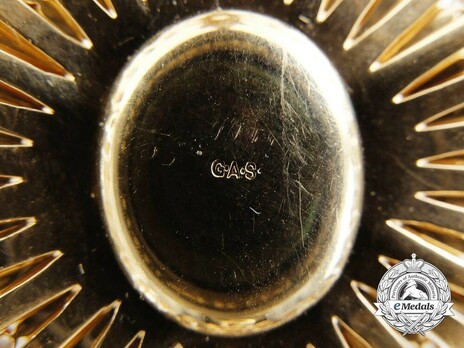
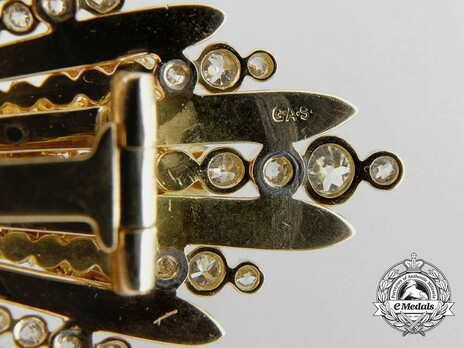
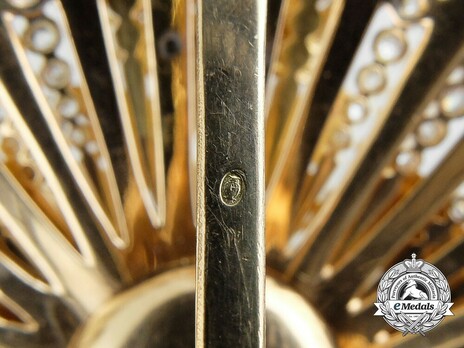
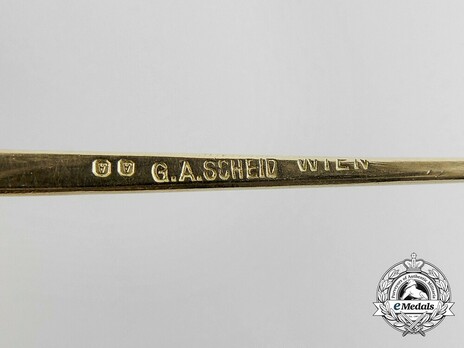
Estimated market value:
Attributes
Physical Description
A special collection was approved during the last period of the Obrenovich Dynasty (1890s). This collection was entrusted exclusively to the workshop of Georg Adam Scheid. It is not clear neither the reason why this award was granted, nor who were the recipients. It is known that only two sets survived.
The star is realized in 18-carat gold, and it is decorated with 228 polished diamonds, with total of 11 carats, preserving the conventional European designs. The star measures 86x92mm and weighs 122.34 g. The background of the star consists of smooth, polished rays connected by circular rings, with exception of the centrepiece. Rays of diamonds protrude from between the metallic ones. All the diamonds rays were made separately and subsequently mounted on the centrepiece with the rings connecting the smooth rays. A golden badge of the Order of the White Eagle in white enamel is affixed to the star. The medallion on the eagle's breast is completely studded with diamonds, as is the surmounted crown. Three jewels are inlaid in the base of the crown in the colours of the national flag, blue, red and white, and a ruby is placed in each eagle's eye. On the reverse of the star, there is the workshop's signature "G.A. Scheid" and the hallmarks for silver content and of the Viennese Assay Office.
The star was probably part of the Grand Cross of the Order of the White Eagle with Diamonds. As other components of the set have not survived, the appearance of the badge, the sash and the case can only be conjectured. The same also applies to the use of this high and precious order, particularly as the law and the legal stipulations on the awards of decorations in Serbia do not mention the award of one of the royal orders decorated with jewels. All known cases are only rare exceptions on special occasions. Although G.A. Scheid was not the sole manufacturer of the order for both Serbian dynasties, the star illustrated can undoubtedly be attributed to the Obrenovich era, as the Order of the White Eagle was the highest order until the institution of the Order of Milosh the Great. The period in which it was awarded can be identified even more precisely, since G.A. Scheid began production of the decoration in 1890. Correspondingly, it can be assumed that the order illustrated was awarded in the period between 1890 and 1898, when the Order of Milosh the Great was introduced. Apart from the star illustrated, there exists yet another order of the White Eagle with Diamonds, which, according to pertaining sources, is preserved in the museum complex of the Smithsonian Institute in Washington. This is the badge of the Grand Cross with diamonds manufactured by the workshop of Rothe & Neffe. The order was manufactured as one piece, so two brooches were made of the body of the eagle and the crown with pendants.
History
The Order of the White Eagle was introduced by King Milan I on January 23, 1883 (Russian method of dating) to commemorate the restoration of the kingdom of Serbia, proclaimed on February 22, 1882 in Belgrade. The Order was designed by historian Stojan Novakovich, who combined two medieval royal symbols of Serbia: the double-headed white eagle (1309-19) and the red escutcheon with the white cross (1402).
The Order was established with five classes awarded in recognition of "services rendered to the King, the Royal Household, and the State in all branches of the national administration or public life." Starting in Class V, this Order was awarded by classes, recipients should remain in a specific class at least two years before the next class could be awarded. It was conferred to military personnel as well as civilians, and to nationals and foreigners alike. In 1915, the decorations with swords were added to honor Officers of the Serbian Army for merits in the battle field. The Order had no motto.
The Serbian system of decoration was completely reorganized by Peter I Karageorgevich once he assumed the throne following the May Coup of 1903. By then, the reverse medallion of the Order was modified. In 1941, the Order was dissolved along with the capitulation of the Yugoslav Kingdom.
In Medalbook, this order is classified into three types. Type I contains the civil awards granted before 1903, and Type II consists of the civil awards granted afterwards. Type III presents the insignia with sword, introduced since 1915.
In Type I, during the period of the Obrenovich Dynasty (1883-1903), the number of holders was limited. According to the law, excluding the royal family a total of 520 persons could be decorate with this Order: I Class was limited to 10 persons, II Class was limited to 20, III Class was limited to 40 , IV Class was limited to 150, and V Class was limited to 300. Correspondingly, the pieces from this period are very rare.
In Order of precedence, the Order of the White Eagle was the highest Serbian order during the reign of Milan I. The I and II Class were placed even before the Order of Takovo I Class with Swords.
This Order featured the royal cipher of Milan I "MI" on the reverse of the eagle. Over this period, the Order was manufactured in Viennese workshops mainly, including Rothe & Neffe, G.A. Scheid, Karl Fleischhacker, and Anton Furst, among others. These badges were manufactured entirely according to the specification of the law.

Versions
$115000 USD
Gold/Enamelled/Diamonds
86x92mm
G.A. Scheid, Vienna
Likely an unique star; recipient unknown, possibly Russian Tsar Nicholas II


Comments
Sign in to comment and reply.


Scroll Top